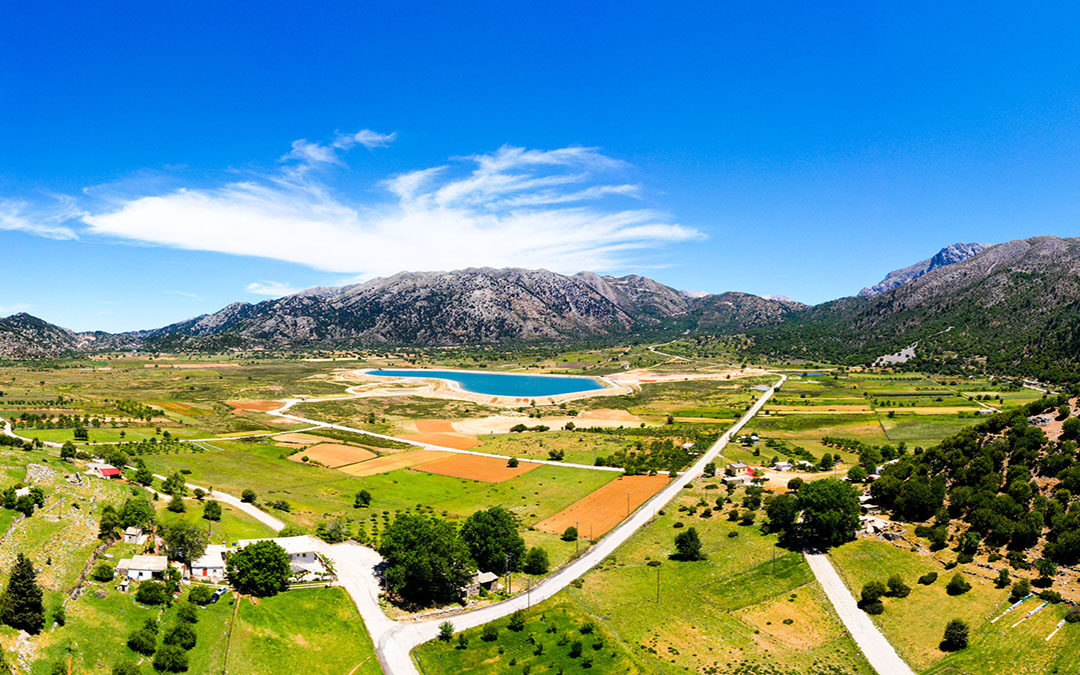Crete, the largest of the Greek islands, is celebrated for its diverse landscapes, rich history, and vibrant culture. Among its most enchanting features are the mountain plateaus that punctuate its rugged terrain. These elevated regions offer a unique blend of natural beauty, cultural heritage, and outdoor adventure, making them a must-visit for anyone looking to explore the heart of Crete.
The Allure of Cretan Plateaus
Cretan mountain plateaus are high-altitude flatlands surrounded by towering peaks. They are renowned for their breathtaking scenery, fertile land, and traditional villages. The combination of dramatic landscapes and cultural richness makes these plateaus an ideal destination for travelers seeking both natural beauty and a taste of authentic Cretan life.
Notable Mountain Plateaus
Crete boasts several prominent plateaus, each with its own distinct character and attractions. Here are some of the most notable ones:
Lassithi Plateau
Located in the eastern part of Crete, the Lassithi Plateau is perhaps the most famous of all. Situated at an altitude of around 850 meters, it is surrounded by the Dikti Mountains and covers an area of approximately 25 square kilometers.
- Windmills: The Lassithi Plateau is iconic for its white windmills, once used for grinding grain and pumping water. While many are no longer in operation, they remain a picturesque symbol of the region’s agricultural heritage.
- Dikteon Cave: This cave is steeped in mythology, believed to be the birthplace of Zeus. It is a popular site for both its historical significance and impressive stalactite and stalagmite formations.
- Agriculture: The plateau’s fertile soil supports a variety of crops, including apples, pears, and potatoes. Visitors can explore local farms and taste the fresh produce.
Omalos Plateau
Situated in the White Mountains (Lefka Ori) in western Crete, the Omalos Plateau is a gateway to the famous Samaria Gorge. At an altitude of about 1,200 meters, it is a starting point for numerous hiking trails.
- Samaria Gorge: One of Europe’s longest gorges, Samaria offers a challenging yet rewarding hike through stunning scenery, ending at the coastal village of Agia Roumeli.
- Mount Gingilos: For those seeking a more strenuous adventure, the climb to Mount Gingilos provides panoramic views of the White Mountains and the Libyan Sea.
- Traditional Cuisine: The villages around Omalos serve hearty Cretan dishes, often featuring local lamb and wild herbs.
Nida Plateau
Located in central Crete, the Nida Plateau is nestled within the Psiloritis Mountain range, also known as Mount Ida. This area is rich in mythological and historical significance.
- Ideon Cave: Another cave associated with the worship of Zeus, Ideon Cave is said to be where the god was hidden from his father Cronus. It is an important archaeological and mythological site.
- Shepherding: The Nida Plateau is known for its pastoral lifestyle, with shepherds grazing their flocks on the grassy plains. Visitors can observe traditional sheep and goat farming practices.
- Psiloritis Natural Park: The park offers various hiking trails that showcase the region’s unique flora and fauna, as well as its geological features.
Cultural and Natural Heritage
Exploring Cretan mountain plateaus is not just about the physical landscapes; it’s also a journey into the island’s cultural and historical heritage. The traditional villages scattered across these plateaus are living museums, where ancient customs and ways of life are preserved.
- Architecture: The stone houses and narrow streets of these villages reflect traditional Cretan architecture. Many buildings have been restored to maintain their historical charm.
- Festivals: Local festivals, or “panigiria,” are an integral part of life on the plateaus. These celebrations often involve music, dance, and feasting, providing a glimpse into the island’s rich cultural traditions.
- Hospitality: The concept of “philoxenia,” or hospitality, is deeply rooted in Cretan culture. Visitors to the plateaus often experience this firsthand, with locals welcoming them into their homes and offering homemade food and drink.
Outdoor Activities
For outdoor enthusiasts, the plateaus offer a range of activities, from hiking and bird-watching to exploring caves and cycling. The varied terrain and breathtaking vistas make these regions a paradise for nature lovers.
- Hiking: Numerous trails crisscross the plateaus, ranging from easy walks to challenging treks. These paths often lead to hidden gems, such as remote chapels, ancient ruins, and spectacular viewpoints.
- Caving: The numerous caves in the plateaus, many with historical and mythological significance, are perfect for spelunking adventures.
- Cycling: The relatively flat terrain of the plateaus is ideal for cycling, offering scenic routes through picturesque landscapes and traditional villages.
Conservation and Sustainability
Efforts to preserve the natural beauty and cultural heritage of Cretan plateaus are vital. Sustainable tourism practices are encouraged to protect these unique environments and support local communities.
- Eco-Tourism: Initiatives focus on minimizing the environmental impact of tourism, promoting local products, and supporting traditional practices.
- Conservation Projects: Various projects aim to protect the biodiversity of the plateaus, including efforts to conserve endemic plant species and wildlife habitats.
Conclusion
Exploring the mountain plateaus of Crete is a journey that encompasses breathtaking natural beauty, rich cultural heritage, and a plethora of outdoor activities. These elevated regions, with their unique landscapes and traditional villages, offer an immersive experience that captures the essence of Crete. Whether you are a history buff, a nature lover, or an adventure seeker, the plateaus of Crete promise a memorable and enriching adventure.


